Though there has been no shortage of modern eCommerce solutions in recent years, TikTok Shop vs Shopify are clearly two of the most talked-about platforms among store owners!
Given their rising popularity and distinct capabilities, figuring out which platform is more suitable for your store isn't always straightforward. But no worries; we've got you covered!
In this guide, we'll compare TikTok Shop and Shopify across all the key criteria:
By the end, you'll have a clear picture of which one fits your business best. Let's get started!
TikTok Shop vs Shopify: A Quick Overview
Before jumping into the comparison, it’s important to understand that TikTok Shop and Shopify are fundamentally different platforms.
In general, TikTok Shop is an eCommerce solution built within the TikTok social media platform. It focuses on social commerce, which means users can sell products directly through videos, live streams, and influencer content. Virality and ease of content-driven selling are among its most outstanding strengths.
Shopify, on the other hand, is a full-fledged, dedicated eCommerce platform that lets you build your own standalone online store. With Shopify, you control everything, from design and inventory to analytics and multi-channel sales. For that reason, the platform has become extremely popular among businesses aiming for long-term growth and advanced store management.
In essence:
- TikTok Shop: built-in audience, viral potential, influencer-centric.
- Shopify: professional store-building, full control, and long-term infrastructure.
TikTok Shop vs Shopify: Which Is Better?
So, between Shopify vs TikTok Shop, which one comes out on top?
Based on our detailed feature-by-feature comparison below, Shopify wins overall thanks to its superior scalability and powerful store management tools. Nevertheless, TikTok Shop shines in marketing reach and social-driven sales (not to mention low-cost entry), which explains its reputation among creators and modern eCommerce sellers.
Below is a quick summary of how the two platforms compare:
Feature | TikTok | Shopify | Winner |
Ease of Use | Long signup with document verification | Instant access, no verification needed | Shopify |
Sales Channels | TikTok-native + integrations with other eCommerce platforms | Online store + POS + social media integrations | Tie |
Scalability | Recommended product cap (~1,000), no digital products, order limits | Supports unlimited products, flexible enterprise options, API/Liquid, 13,000+ Shopify apps | Shopify |
Customization | Drag-and-drop only, limited to preset layout | Full code access, 260+ themes | Shopify |
Marketing Tools | In-app video ads, influencer tools, and UGC potential | Email marketing, automation, discount tools | TikTok Shop |
Pricing | Free to start, no monthly fee, ~3% transaction fees, 6-7% commission fees | Starts at $39/month + transaction fees without Shopify Payments | TikTok Shop |
Customer Support | Chat only, no phone/email/live agent availability | Chat, forums, and limited live support | Tie |
Want to know how we reached these conclusions? Keep reading the in-depth comparison below to explore each category in detail!
1. Ease of Use (Shopify wins)
The Verdict:
Regarding TikTok Shop vs Shopify ease of use, the road to getting started is significantly smoother on Shopify. You don’t have to go through lengthy verification processes, upload documents, or wait days for approval!
That said, to understand where exactly each platform makes things easy (or complicated) for you, let’s break it down further.
TikTok Shop's ease of use
At the moment, TikTok Shop offers two ways to create a seller account: you can either sign up using your phone number directly or log in via your existing TikTok account.
Nevertheless, even if you choose the TikTok account route, you’re still required to provide your phone number anyway so TikTok can send you a verification code. Hence, the process is a bit longer than it appears at first glance.
Once that’s done, you’ll need to provide a host of additional information: your business type, store name, product category, and identity documents. On top of that, you must verify your email with yet another code. All of these steps are mandatory and cannot be skipped!
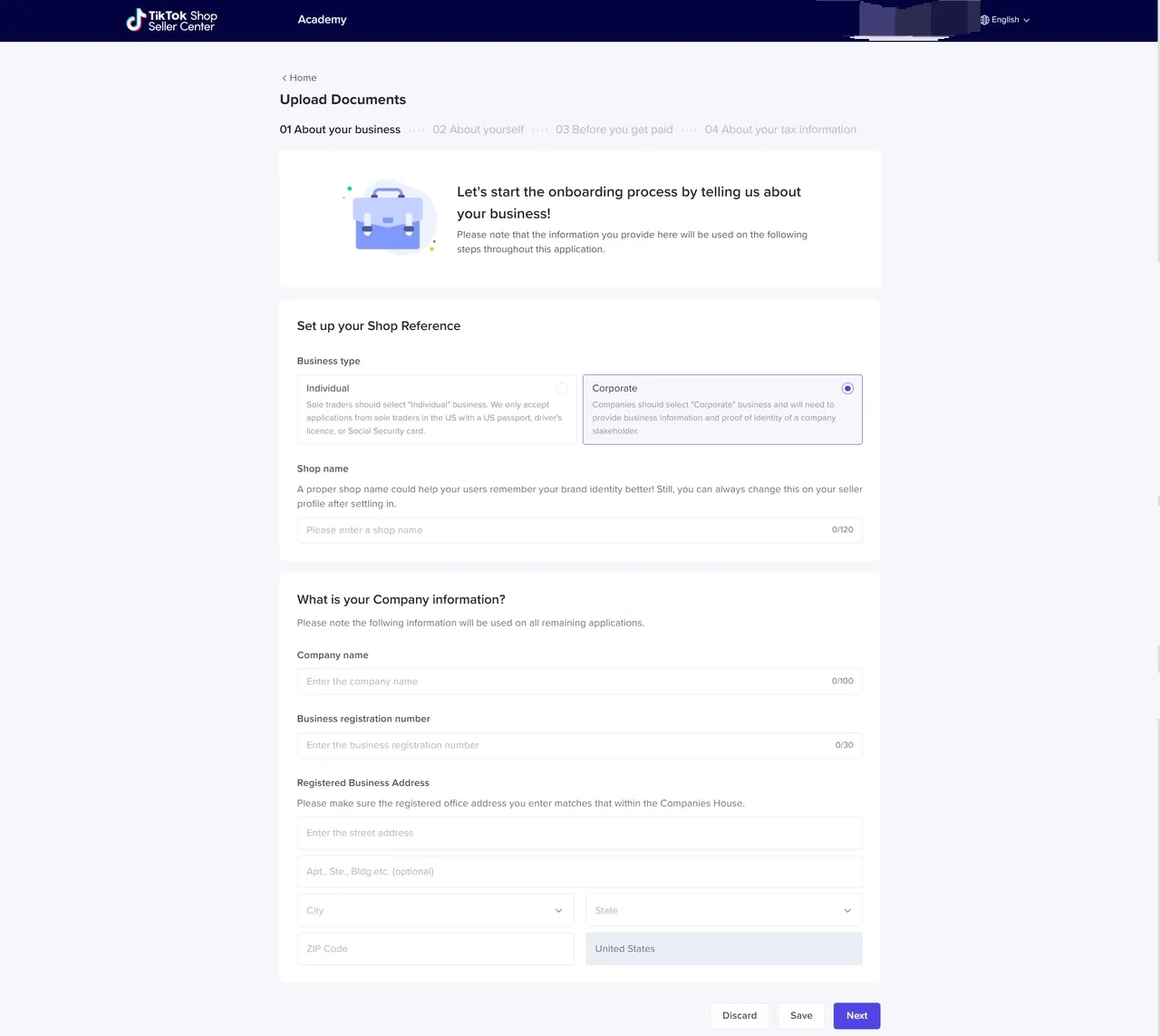
And even after submitting everything, your store isn’t immediately ready to use. TikTok typically takes 1 to 2 days to review and approve your application. Only then will you gain access to the seller dashboard.
On a positive note, once inside, the dashboard itself is well-structured with clearly labeled sections, so managing your store later on should be quite a breeze.
Shopify’s ease of use
With Shopify, you simply click “Start Free Trial,” create an account using your existing accounts (Gmail, Facebook, or Apple), and answer a few basic questions about your business, all of which are entirely skippable. No document uploads or verification steps are needed!

Within minutes, you’re dropped right into your store’s dashboard. And like TikTok Shop, Shopify’s dashboard is intuitive, clearly labeled, and beginner-friendly; you should find it easy to start building your store right away.
2. Sales channels (Shopify wins)
The Verdict:
Shopify not only supports a standalone online store and multiple social media integrations but also includes Shopify POS to give merchants a powerful offline sales channel. This combination makes Shopify a more versatile option for businesses looking to sell across both digital and physical spaces.
In short, TikTok Shop wins in viral potential, while Shopify brings versatility and multi-channel syncing to the table. Let's take a closer look at how TikTok Shop vs Shopify supports your sales strategy:
TikTok Shop's sales channels
Obviously, TikTok Shop is naturally centered around the TikTok ecosystem.
The platform allows sellers to showcase products through shoppable videos; users can click on product links while watching short-form content. There's also LIVE Shopping, where sellers (or influencers) demonstrate products in real time and respond to questions from viewers. In addition, each TikTok Shop has its own Shop tab on the brand's TikTok profile, which acts as a mini storefront within the app.
Still, it's important to note that TikTok Shop isn't limited to TikTok alone. With the help of third-party tools and integrations, you can easily connect your TikTok Shop to other eCommerce platforms (Shopify included) or social media channels. This feature allows for broader reach while still keeping TikTok at the core of their sales strategy.

Shopify's sales channels
Meanwhile, Shopify's core strength lies in powering standalone online stores (that is, your own branded website). Fortunately, it doesn't stop there! Shopify also enables frictionless integrations with social media platforms like TikTok, Facebook, Instagram, and YouTube, so merchants are given lots of flexibility to reach audiences wherever they shop.
Sure, unlike TikTok Shop, Shopify doesn't offer native influencer partnerships as part of its platform; after all, it's not a social network. Nevertheless, Shopify does compensate for this with its powerful Shopify POS (Point of Sale) system, which allows merchants to sell in physical locations, pop-ups, or trade shows while syncing inventory, customer data, and sales analytics across both in-person and online sales channels. The result is a convenient, powerful, centralized sales ecosystem that's ideal for merchants with both digital and physical operations.
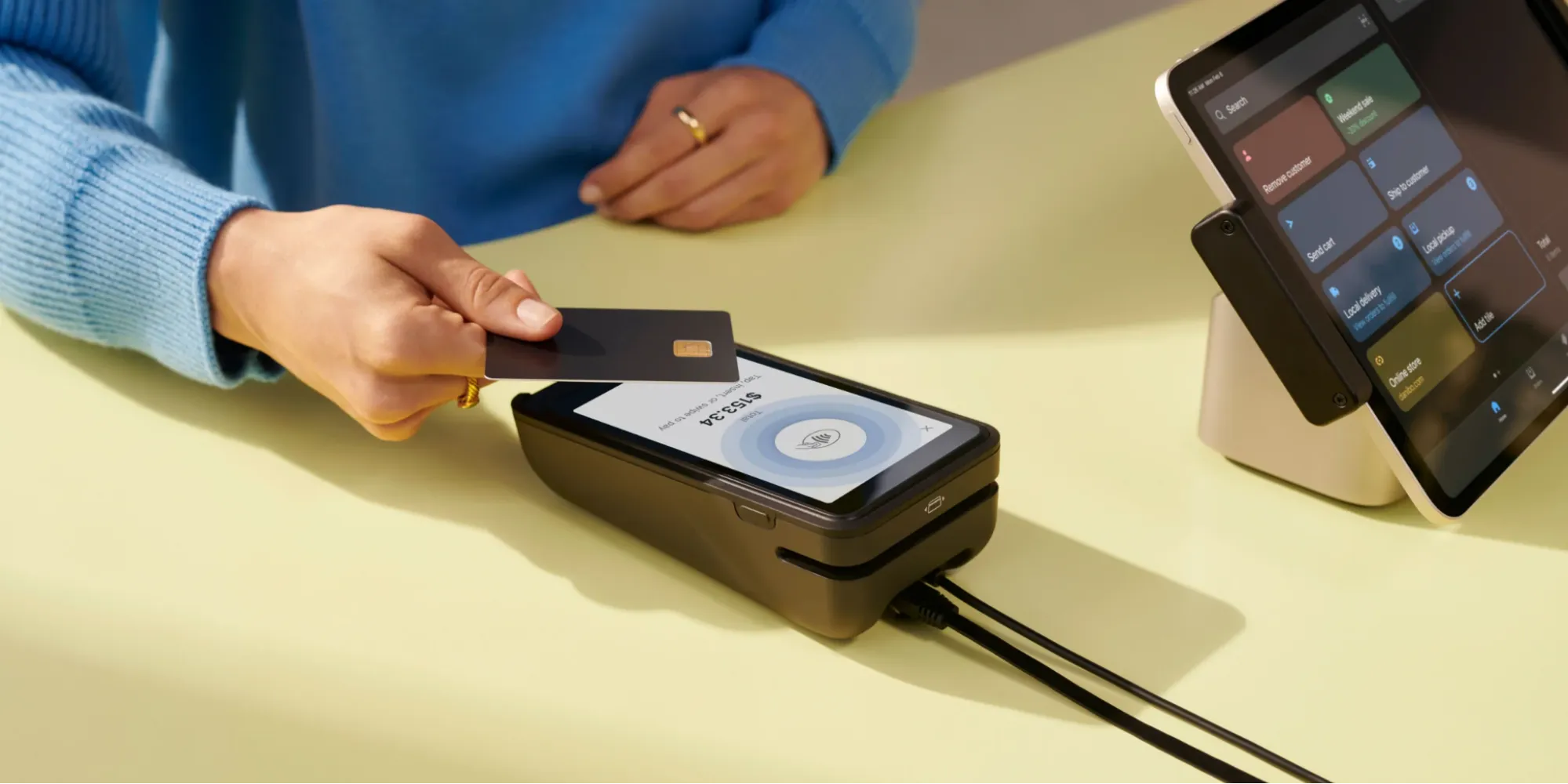
3. Scalability (Shopify wins)
The Verdict:
TikTok Shop may provide a fast and trendy entry into eCommerce, but it has practical limitations that can hinder long-term growth. Shopify, on the other hand, was built to grow with merchants at every stage.
That said, both platforms serve different kinds of sellers. Below is a more detailed breakdown of how TikTok Shop vs Shopify handles scalability.
TikTok Shop's scalability
At the moment, TikTok Shop doesn't actually enforce a hard cap on product listings.
Nevertheless, it still functions within the constraints of a social platform, which naturally limits its scalability. Specifically, in practice, many experienced sellers recommend managing no more than around 1,000 products; going far beyond that tends to slow down operations and complicate inventory management.
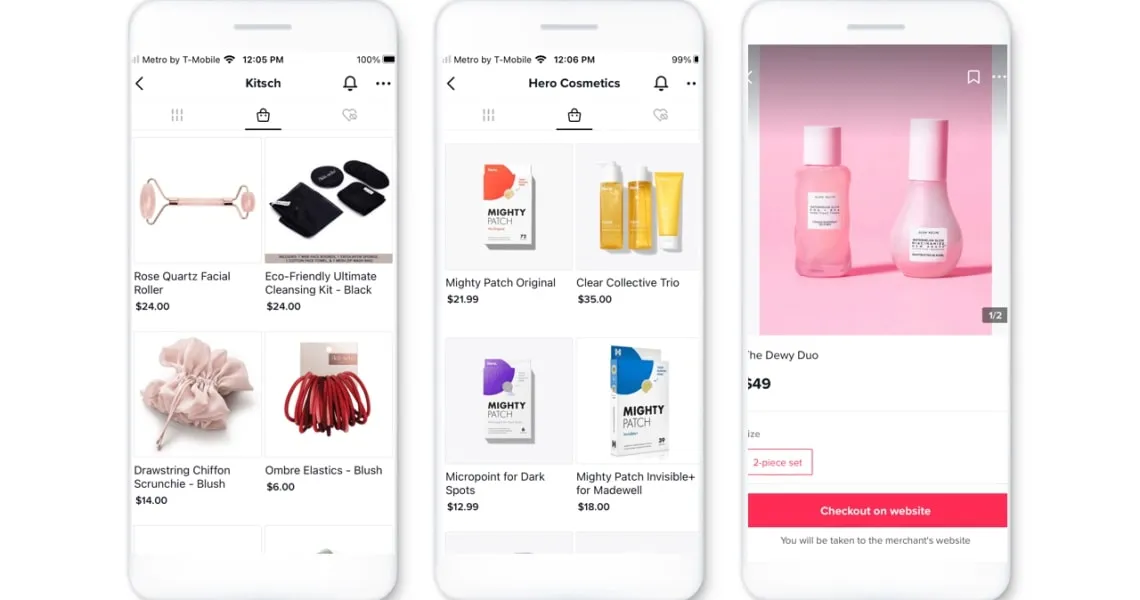
Another major scalability concern is order limitations: new TikTok Shop sellers may be restricted to just 50 orders per day. And worse, TikTok Shop does not support digital products! Sure, there are unofficial workarounds (like manually emailing downloads or embedding third-party links); however, they often violate policy and carry significant risks of account suspension.
Shopify's scalability
Contrary to TikTok Shop, Shopify was built from the ground up to support growth at scale. There's no stated limit on how many products you can sell, and many established businesses run stores with tens of thousands without issue. As your business grows, Shopify's performance remains stable and manageable through robust backend systems and customizable workflows.
Better yet, for enterprise-level operations, the Shopify Plus plan offers tailored solutions that include significant infrastructure upgrades, such as higher API call limits, customizable checkout experiences, advanced automation tools through Shopify Flow, and access to dedicated support from Shopify’s merchant success team.
Not to mention, Shopify's App Store includes over 13,000 apps for everything from upselling tools and SEO boosters to advanced analytics and shipping automation. Hence, it's a breeze to scale globally or integrate with external systems!
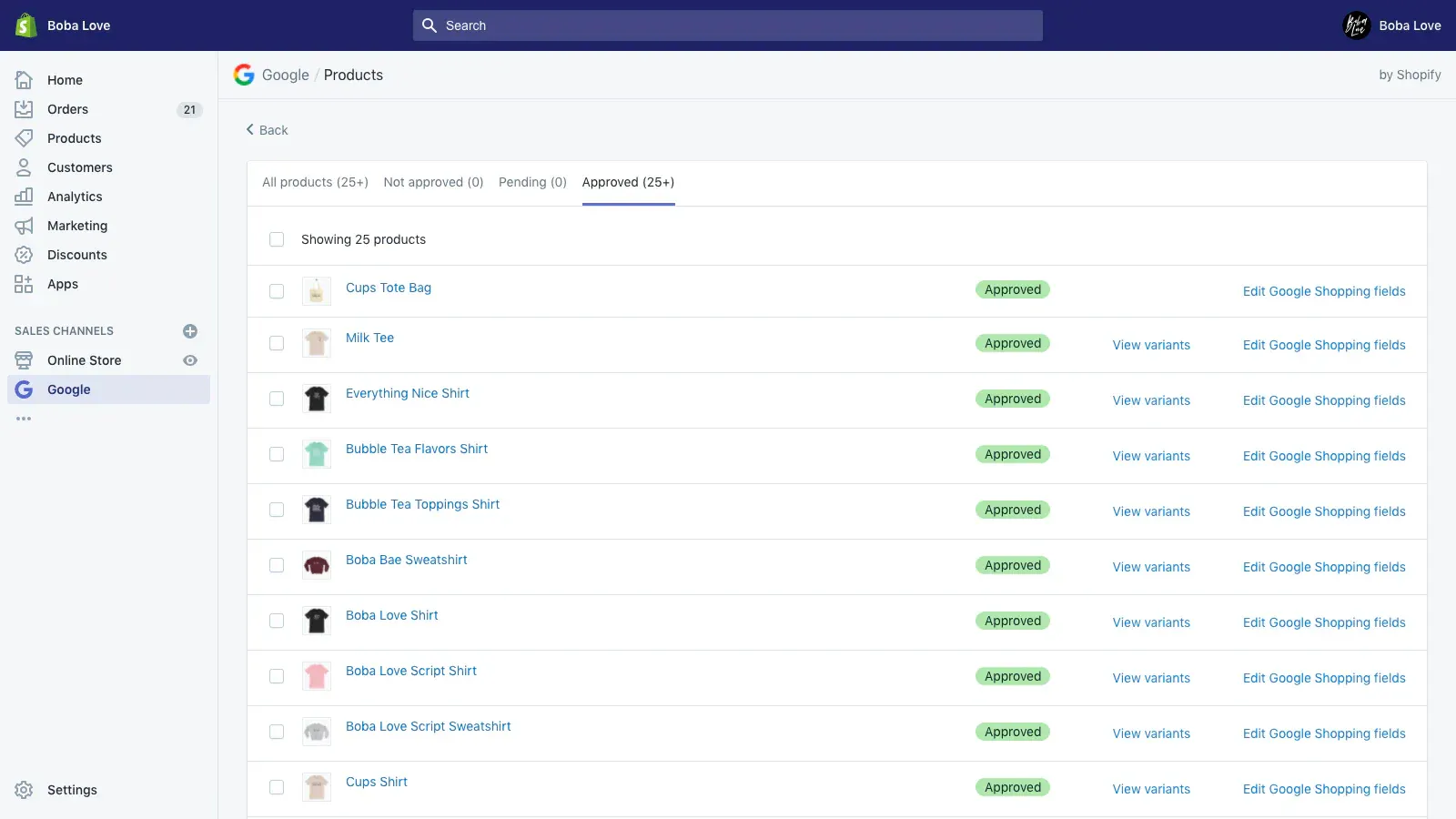
And more importantly, Shopify supports both physical and digital products (though not officially). You can use apps like Shopify's Digital Downloads from the Shopify App Store to automate delivery and licensing.
4. Customization (Shopify wins)
The Verdict:
Both platforms offer drag-and-drop editing for beginners, but Shopify goes several steps further by allowing full access to code. That means you can build a store that is not only visually unique but also functionally tailored to your business.
To better understand the difference between TikTok Shop vs Shopify, let's look at how each platform approaches customization!
TikTok Shop's customization
At the moment, TikTok Shop offers a Shop Page Builder, which allows sellers to design their storefronts using a drag-and-drop interface.
Specifically, once you click into the “Shop page design” section, you'll be able to add banners, product grids, and promotional sections from a menu on the left and tweak them using basic settings on the right-hand side. A live canvas in the middle gives you a visual preview of your layout as you make changes; you can understand how the final page will look to customers!

Overall, this setup is intuitive and sufficient for simple storefronts. However, keep in mind that you're still restricted to TikTok's built-in components. There's no way to modify the underlying code, upload your own themes, or connect APIs for deeper personalization.
Shopify's customization
How about Shopify? This platform offers 260+ professionally designed themes (20+ free, others ranging from $100 to $500), each of which can be customized using an easy-to-use drag-and-drop editor. Just like with TikTok Shop, you can visually arrange elements like product sections, banners, and call-to-actions to suit your brand.
Better yet, Shopify doesn't stop there. For users with more advanced needs, Shopify provides full access to theme code, including Shopify Liquid (its own templating language).

With such an impressive level of flexibility, the look of your store is not the only thing you're customizing; you have full control over its entire behavior and capabilities!
5. Marketing tools (TikTok Shop wins)
The Verdict:
Shopify offers robust, data-driven marketing tools that rival most eCommerce platforms. However, TikTok Shop brings something Shopify can't: direct access to a content-hungry audience, influencer culture, and viral potential.
As you can see, both platforms have very different approaches to marketing. Let's break down the distinction between TikTok Shop vs Shopify.
TikTok Shop's marketing tools
TikTok Shop offers a marketing ecosystem built directly into the TikTok platform, where users are already watching, engaging with, and reacting to content all day long. Indeed, sellers can use a variety of in-app ad formats to promote their products:
- Video Shopping Ads: These allow creators or sellers to make standard TikTok videos shoppable by adding clickable product tags that lead directly to purchase.
- LIVE Shopping Ads: Promote products during real-time streams, where hosts can demo, explain, and even interact with audiences to lead to instant purchases.
- Product Shopping Ads: Use static imagery and product details to promote specific items across users' feeds.
Beyond paid ads, TikTok's most powerful marketing tool is the community itself! You can partner with influencers and KOLs (Key Opinion Leaders) to promote your products in a way that feels organic and authentic to viewers. In fact, this approach has been proven to drive better engagement than traditional ads or SEO alone.
We also recommend using viral features like hashtags, trending sounds, and user challenges to fuel user-generated content (UGC). Combined with TikTok's sophisticated recommendation algorithm, even a small store has the chance to go viral and reach massive audiences in a short time without requiring a huge marketing budget.

Shopify's marketing tools
Obviously, Shopify can't offer the instant social reach that TikTok does. Fortunately, it compensates with a wide array of website-based marketing tools that are deeply integrated into your store's infrastructure.
One of the most powerful tools is Shopify Email, which allows you to create and send sleek, product-linked email campaigns with up to 10,000 free emails per month. These campaigns can be personalized using customer data and segmentations, paving the way for more targeted and effective messaging.
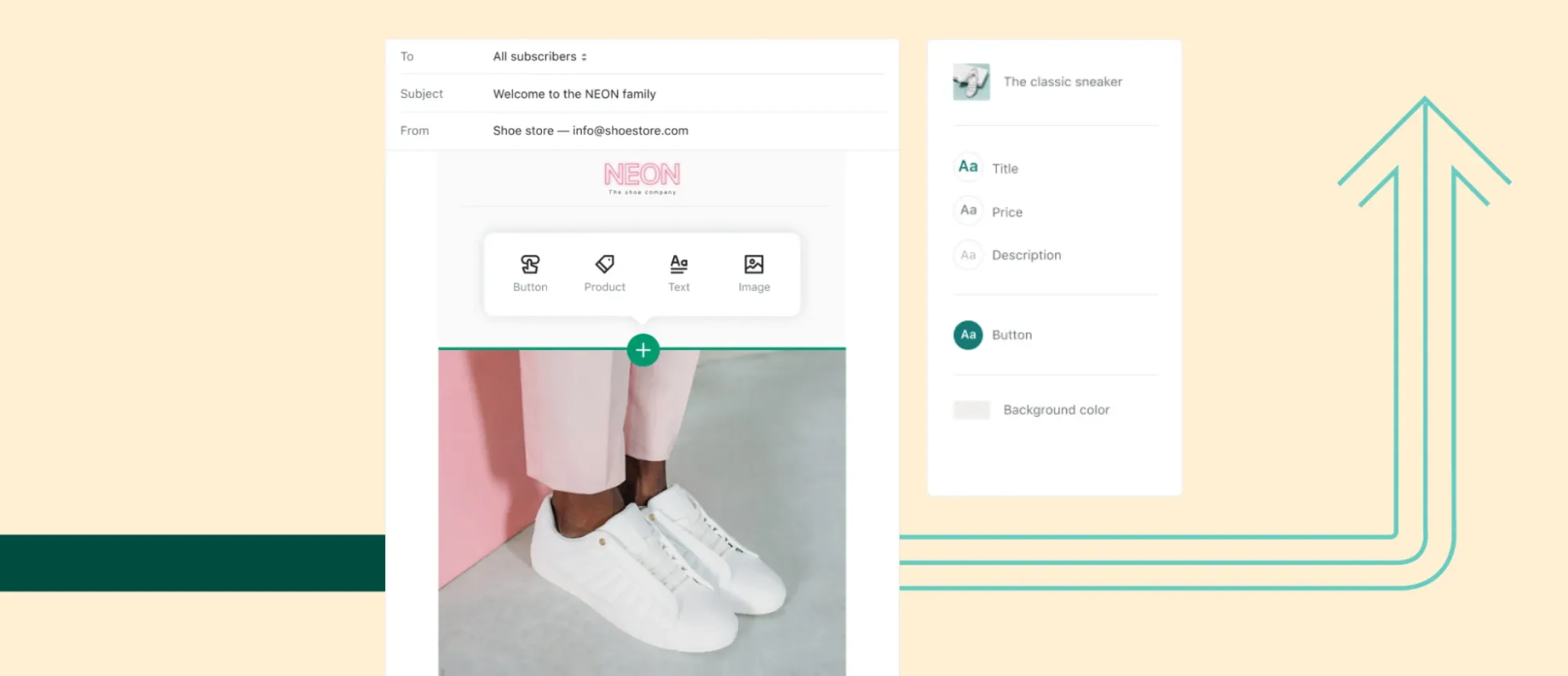
Furthermore, Shopify also includes built-in tools for:
- Lead capture forms to grow your subscriber list.
- Live chat to engage visitors in real time.
- Abandoned cart recovery to re-engage hesitant buyers
- Automated discount codes and gift cards for promotional campaigns
All of these can be tied together with marketing automation workflows, which let you create rule-based campaigns and customer journeys all from within your Shopify admin panel! It's a comprehensive setup in general, great for data-driven marketing and long-term brand building.
6. Pricing (TikTok Shop wins)
The Verdict:
Creating a TikTok Shop is completely free, with no monthly fees or setup costs, which makes it an incredibly accessible option for small businesses or content creators looking to enter eCommerce with minimal upfront investment.
To learn the difference between TikTok Shop vs Shopify in how they approach monetization, let's take a closer look at what you're actually paying for:
TikTok Shop's pricing
Although signing up for TikTok Shop can be a bit lengthy and tedious (as we've previously discussed), there's a major upside: it's completely free to create a store!
That's right. As long as you meet the basic requirements – being at least 18 years old, having your application approved, and (if you're a creator) maintaining a minimum of 1,000 followers – there are no setup or monthly subscription fees involved in launching a shop.
Your main expenses come later, and they're mostly dependent on your own marketing efforts. This includes the cost of creating promotional videos, running TikTok Ads, and potentially collaborating with influencers.
TikTok Shop does charge a transaction fee of roughly 3%, but the exact rate varies by region. Plus, there are TikTok Shop commission fees (also known as the Platform Commission Fee), which typically range from 2% to 8%, depending on the product category and location.
Shopify's pricing
On the other hand, Shopify uses a more traditional subscription-based pricing model. You choose a plan based on your business size and needs, and in return, you get access to hosting, store themes, security, customer support, and a robust set of eCommerce tools.
As of now, the main pricing tiers include:
- Basic: $39/month
- Grow (formerly Shopify): $105/month
- Advanced: $399/month
- Shopify Plus (Enterprise): Starts at around $2,300/month
These plans are clear and predictable, so you shouldn't find it too difficult to plan your expenses. However, note that there's still the matter of transaction fees. If you don't use Shopify Payments (their in-house payment gateway), you'll incur additional fees on every sale: 2% on the Basic plan, reduced on higher tiers (1%, 0.6%, or 0.2%).
7. Customer support (A tie)
The Verdict:
TikTok Shop vs Shopify falls short of providing truly responsive or comprehensive assistance. Sure, they do offer help centers, forums, and chatbots, but neither platform delivers consistently accessible, high-quality human support.
Let's take a closer look at the support options each platform provides and where they still need improvement:
TikTok Shop’s customer suport
Getting support on TikTok Shop is a multistep process, and most of it is self-service. Specifically, you need to:
Open the TikTok app and tap “Shop”, then scroll beneath the search bar and tap “Help.”
From there, you can either find answers related to specific orders or tap “Other issues” and follow a series of preset steps.
If none of these solve your issue, you can scroll down and tap “Contact Us” to initiate a chat with support. Unfortunately, that chat is your only direct line of support. There's no phone number, no email access, and certainly no 24/7 live agent availability!
Shopify's customer support
Though Shopify positions itself as a professional eCommerce platform, it also leaves much to be desired when it comes to direct support. The primary resources include:
- A community forum where other users can offer advice or share similar issues
- A knowledge base with guides and tutorials on common problems
- A chatbot that tries to answer basic questions but, more often than not, redirects you to articles you've probably already seen
Sure, Shopify technically offers live chat support, but getting to a real person is challenging. Phone support is no longer offered, and there's no premium 24/7 option unless you're on the enterprise-level Shopify Plus plan (and even then, it's not always reliable).
TikTok Shop vs Shopify: FAQs
Which is better, Shopify or TikTok?
It depends on your goals. Shopify is better for long-term brand building and scalability. Nevertheless, TikTok is great for fast exposure and low-cost entry, especially if you already have an audience or influencer connections.
Is selling on TikTok Shop worth it?
Yes, if you're targeting a younger, social-savvy audience and are willing to invest in content creation or influencer marketing. It's free to start and offers high engagement potential.
Does TikTok Shop work with Shopify?
Yes! There are plenty of third-party apps and integrations that allow you to connect your TikTok Shop with your Shopify store to sync products and manage orders more efficiently.
What are the cons of TikTok Shop?
Limited customization, caps on new sellers (like daily order limits), no support for digital products, and slower onboarding due to identity verification.
TikTok Shop vs Shopify: Which One Should You Choose?
So, between TikTok Shop vs Shopify, which one should you choose?
Here's the main takeaway:
- If you're building a long-term business, need full control over your website, want to sell digital or physical products at scale, and prefer an all-in-one platform, Shopify is the better choice.
- But what if you're a content creator, a brand targeting Gen Z, or someone looking for a low-cost entry into eCommerce? In that case, TikTok Shop is a great place to start, even more so when paired with good content or influencer partnerships.
But we have some good news: in reality, you don't actually have to choose just one. Many merchants successfully use Shopify to build their main store while leveraging TikTok Shop for traffic, brand awareness, and social-driven sales. With the right setup, the two platforms can work hand-in-hand to drive growth across multiple channels!
For more information, check out our Shopify guide and join our Facebook Community.

